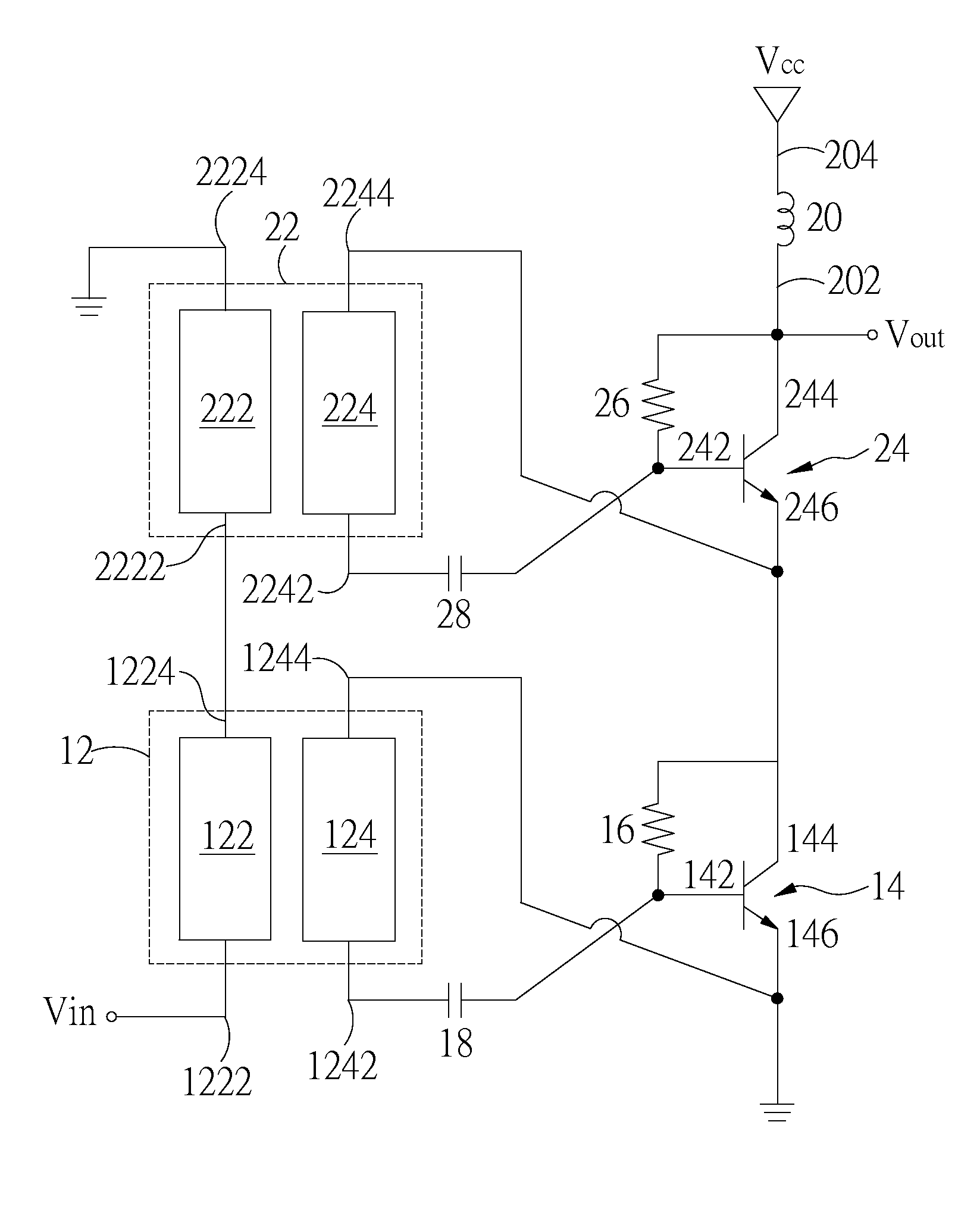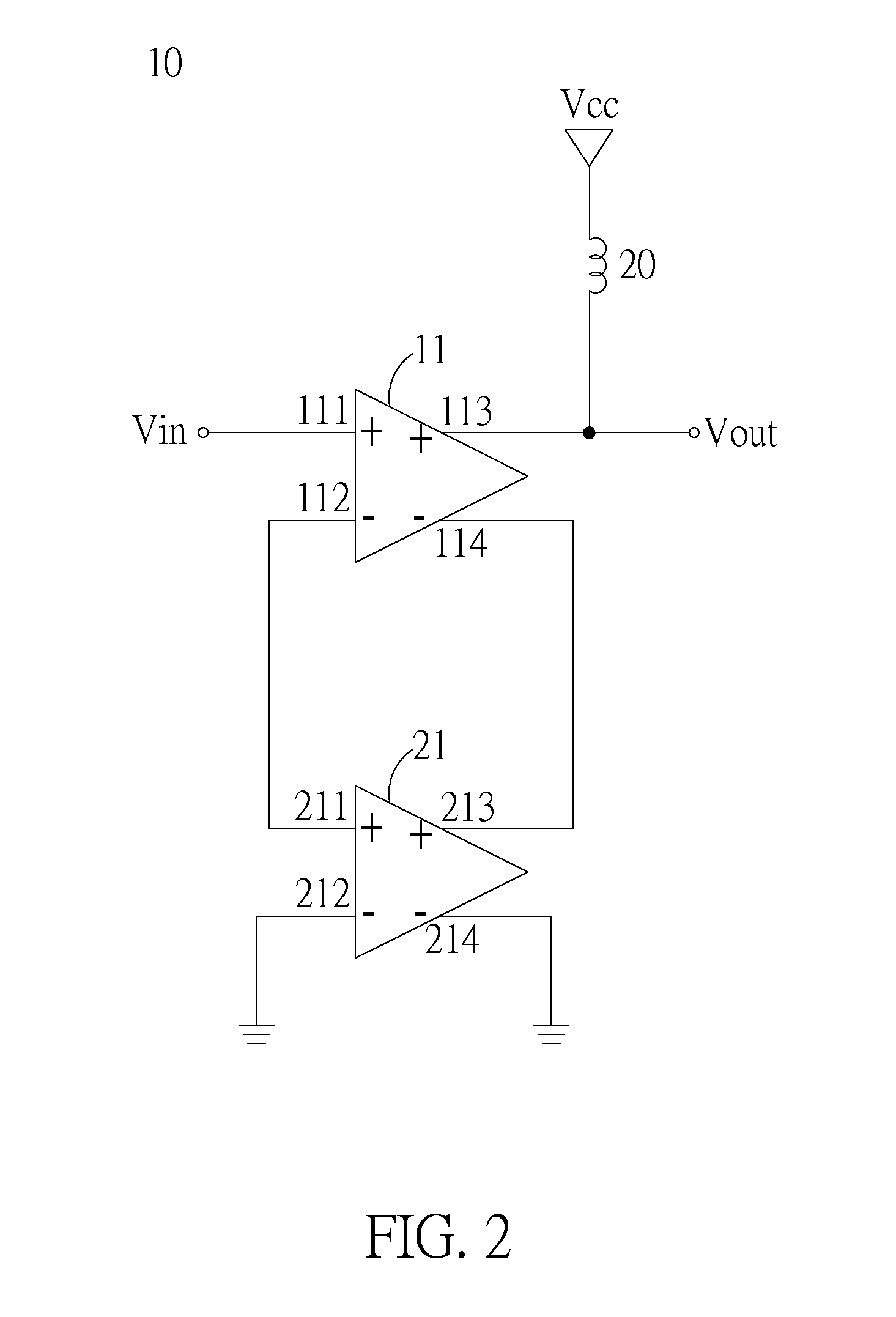Power amplifier having input ends combined in series and output ends combined in series
a power amplifier and series technology, applied in the field of power amplifiers, can solve the problems of large line loss, difficult design of power amplifiers, and inability to design power amplifiers easily, and achieve the effect of reducing the input impedance of power amplifiers and reducing the design difficulty
- Summary
- Abstract
- Description
- Claims
- Application Information
AI Technical Summary
Benefits of technology
Problems solved by technology
Method used
Image
Examples
Embodiment Construction
[0013]The present invention is described by the following specific embodiments. Those with ordinary skills in the arts can readily understand the other advantages and functions of the present invention after reading the disclosure of this specification. The present invention can also be implemented with different embodiments. Various details described in this specification can be modified based on different viewpoints and applications without departing from the scope of the present invention.
[0014]FIG. 1 is a circuit diagram of a power amplifier 10 according to a preferred embodiment of the present invention. Referring to FIG. 1, the power amplifier 10 includes a first transformer 12, a first transistor 14, a first resistor 16, a second transformer 22, a second transistor 24, a second resistor 26, and a bias circuit 20.
[0015]The first transformer 12 includes a first primary coil 122 and a first secondary coil 124. A first end 1222 of the first primary coil 122 is used to receive an ...
PUM
 Login to View More
Login to View More Abstract
Description
Claims
Application Information
 Login to View More
Login to View More - R&D
- Intellectual Property
- Life Sciences
- Materials
- Tech Scout
- Unparalleled Data Quality
- Higher Quality Content
- 60% Fewer Hallucinations
Browse by: Latest US Patents, China's latest patents, Technical Efficacy Thesaurus, Application Domain, Technology Topic, Popular Technical Reports.
© 2025 PatSnap. All rights reserved.Legal|Privacy policy|Modern Slavery Act Transparency Statement|Sitemap|About US| Contact US: help@patsnap.com



